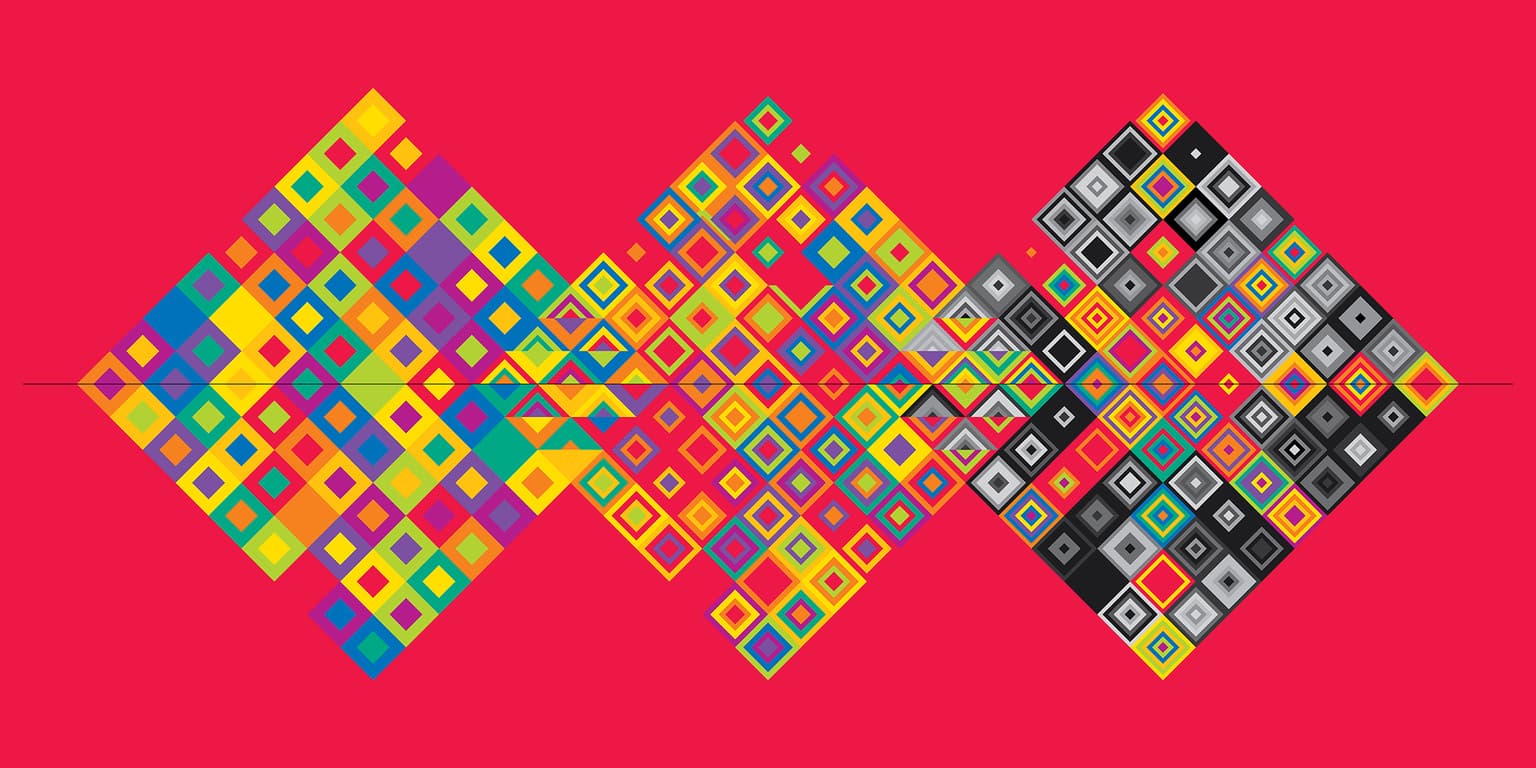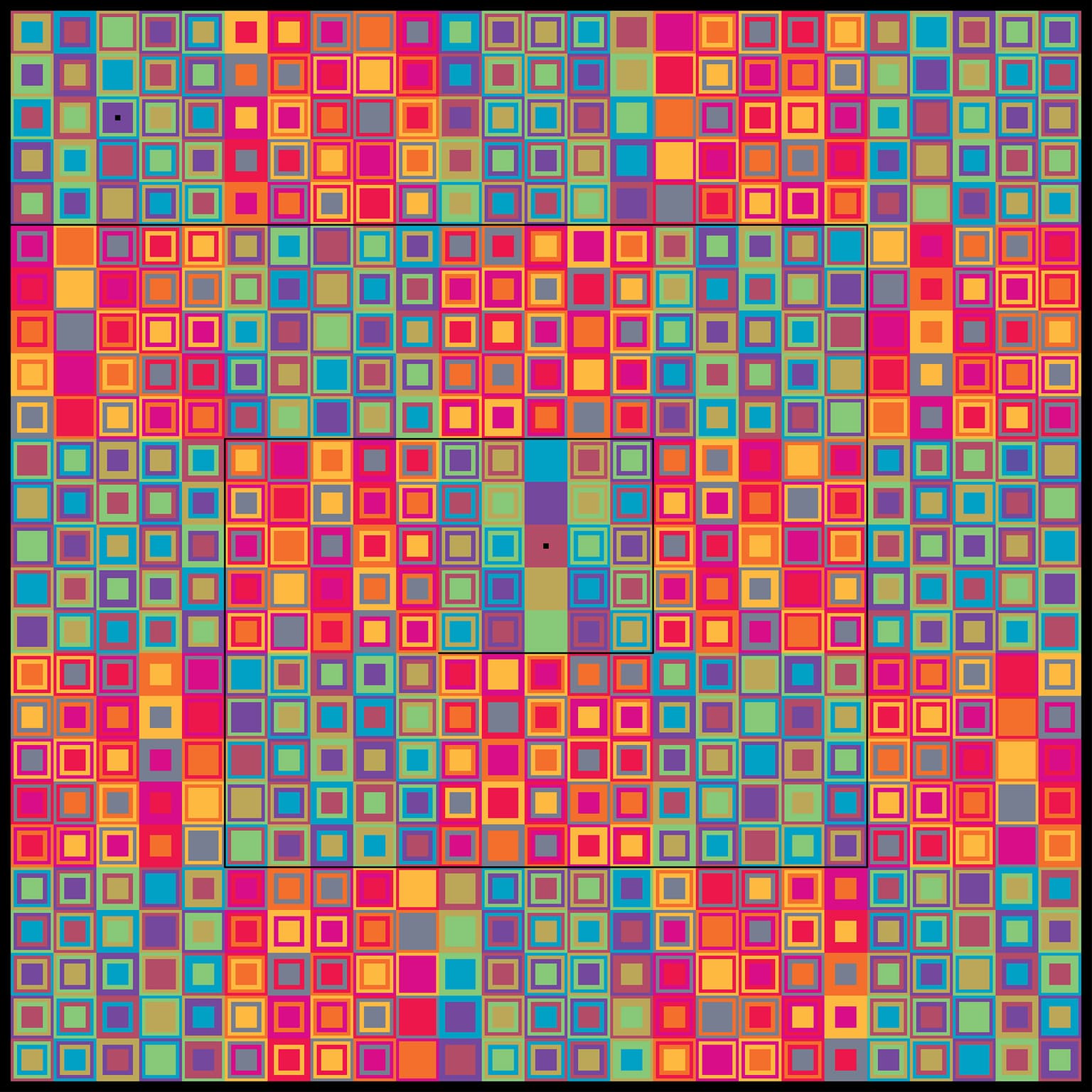Artists
Margaret Kepner
Independent Artist
Washington, District of Columbia, USA
Statement
I enjoy expressing mathematical concepts through visual attributes such as color, geometric forms, and patterns. I have a background in mathematics, which provides me with a never-ending supply of subject matter. My lifelong interest in art gives me a vocabulary and references to utilize in my work. Topics I have explored recently include multimagic squares, where a magic square remains magic even when its elements are raised to a higher power, n. When n = 2, the original elements are each squared. If the new square remains magic, it is designated as multimagic of degree 2, or bimagic.
Artworks

A Ninth-Order Bimagic Square with Ambition
40.0 x 50.0 cm
Archival Inkjet Print
2025
A magic square of order 9 is an 9x9 array of numbers, where the rows, columns, and diagonals all sum to the same number, termed the magic constant. A square is bimagic if the same properties hold for the square formed by squaring each number in the original square. This piece is based on a bimagic square first discovered by Pfeffermann in 1891. The numbers run from 0 to 80, and are expressed in base 9, using 9 colors in a concentric-square place system. The original square is shown in the left-most diamond in the composition. In the central diamond, the values are squared, but it remains magic. However, the third diamond based on cubed values, fails to be fully magic and is represented in mostly grayscale tones, with a few exceptions.

A Plan for a Book of 25 Magic Squares
50.0 x 40.0 cm
Archival Inkjet Print
2025
This design is based on a magic square of order 25, containing the numbers from 0 to 624. Each row, column, and main diagonal sums to the magic constant of 7800. This particular magic square is also composite, and has 25 square substructures in a 5x5 grid. Each of these mini-squares is an order 5 magic square (although the numbers are not consecutive), with a magic constant of 1560. The values in the magic square are represented visually by a base 5 system of concentric squares, which are colored using two colorways to form an overall checkered pattern of blue-based and red-based mini-squares. The layout shows a method for cutting and folding the large magic square into an accordion-style book of 25 magic mini-squares.